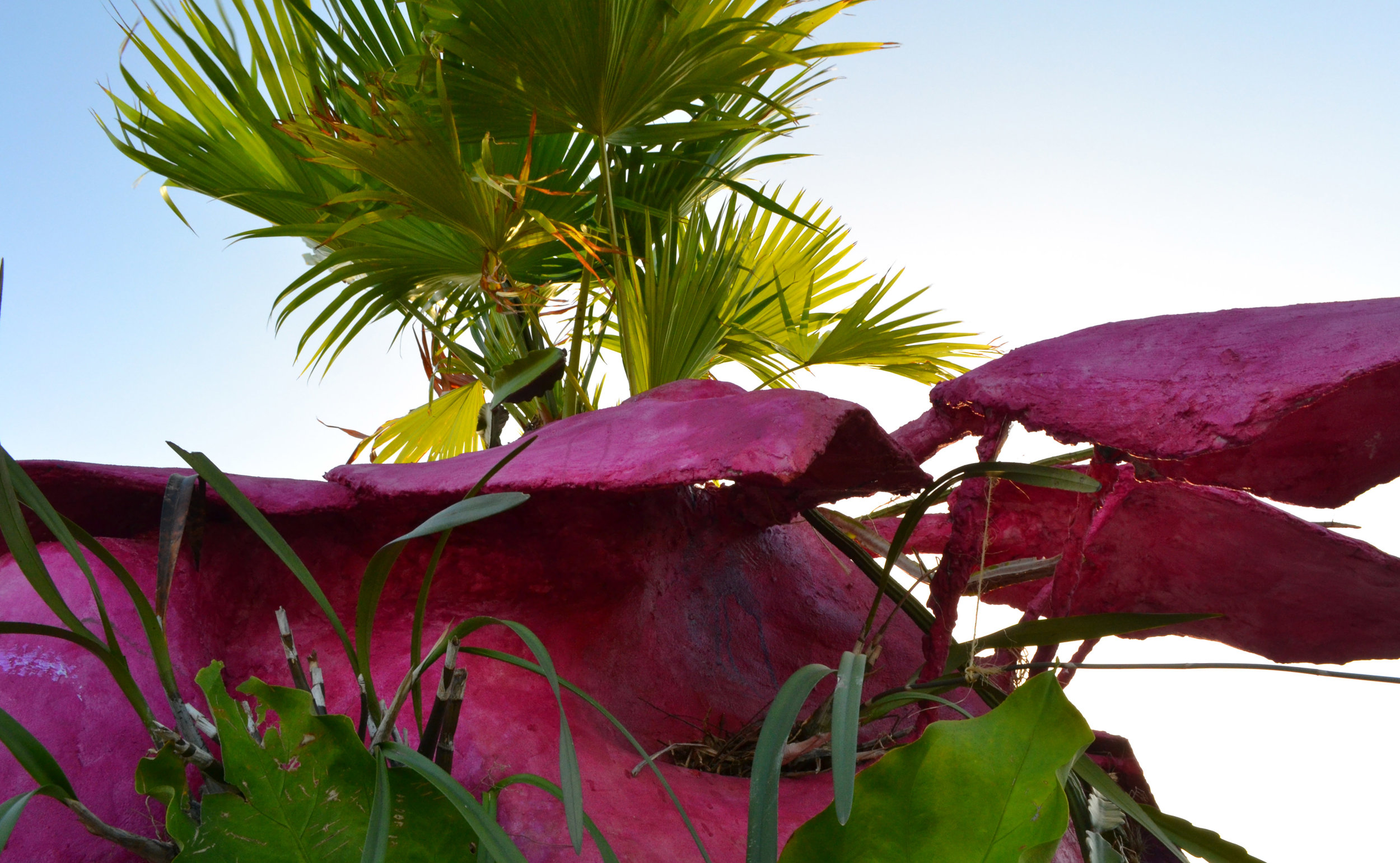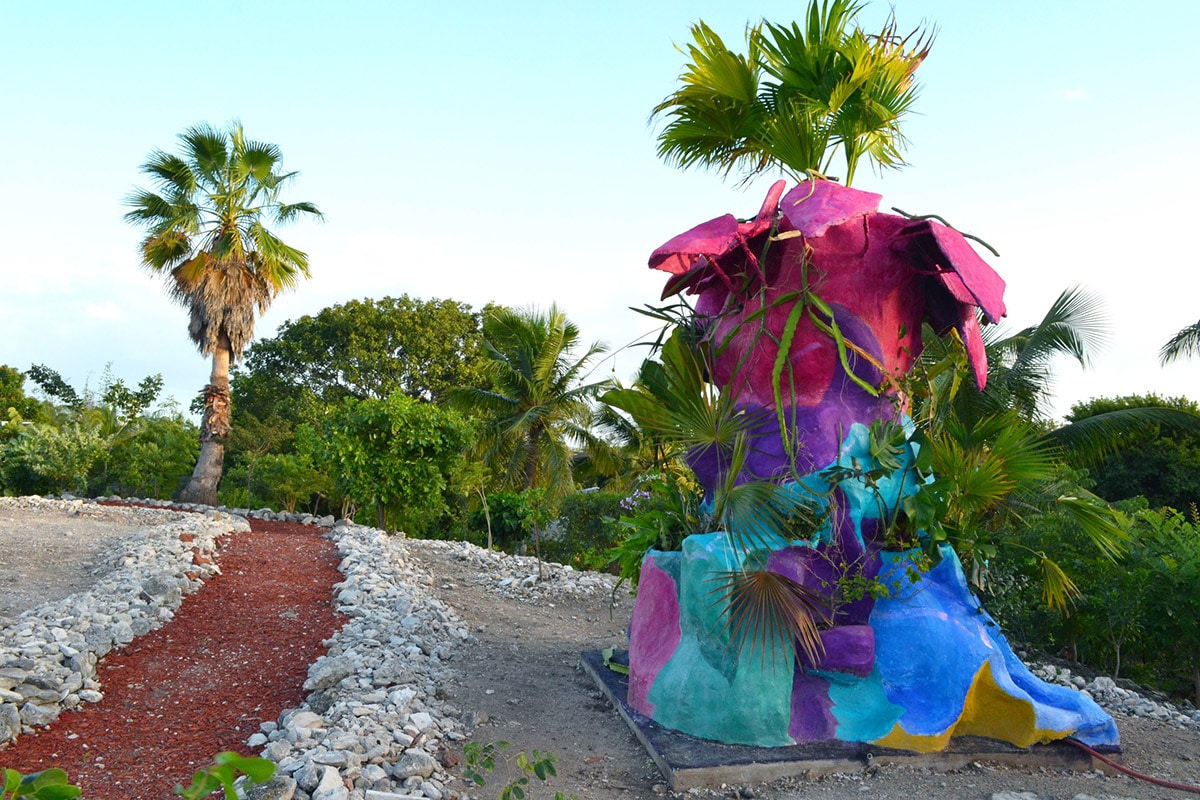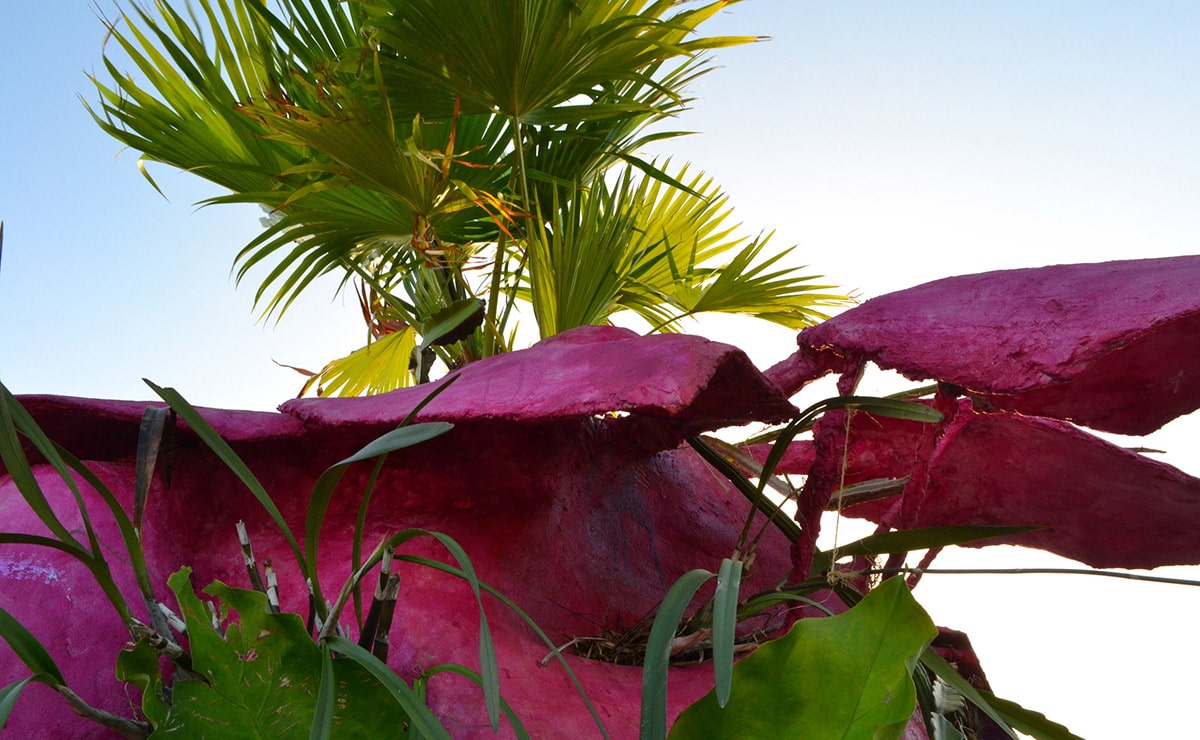
By Natalie Willis
The 9th National Exhibition, “NE9: The Fruit and the Seed”, opened on December 13th, 2018, and the reception was quite honestly overwhelming in the abundance of bodies, spirits and minds present. As we approach this penultimate exhibition on the way to the 10th National Exhibition, this particular biennial’s harvest has been ripe with unabashed representations of self, social critique, and calls for action – all of which bear hopeful tidings for its next, landmark iteration of this key survey in checking the pulse of art in The Bahamas.

“Sculpture For Plants” (2018), Alex Timchula, mixed media with living plants, dimensions variable. Part of the 9th National Exhibition “NE9: The Fruit and the Seed” currently on view at the National Art Gallery of The Bahamas.
Part garden, part spaceship, part act of love and care, Alex Timchula’s contribution to the NE9 is a living, growing representation of a utopian dream. In a hand-made structure, built by Timchula and her skillful team of craftsmen over the past two months before the start of the exhibition, piece by piece visitors were able to witness the growth of this artwork from the ground up, but also the growth of the plants secured within it. This is no ordinary planter, however, as Timchula has carefully selected native and non-native species to live together harmoniously, calling the sculpture their home. It’s a loving kind of ecology, and the message is a clear one of unity and tolerance and making space – and a welcomed one for the holidays.
Looking to work in the NE9 like Timchula’s, or the works of Saskia D’Aguilar and Jenna Chaplin, one thing becomes very clear – non-native does not always equate to invasive, and in the right settings these plants become less of an ill-perceived environmental terror and instead prove more useful and often beautiful than we might initially allow ourselves to think. Many of the plants we hold dear as iconic symbology of the Caribbean are very much not of this region: Poincianas from Madagascar (where they are, surprisingly, endangered in the wild), Coconuts from South Asia, Pineapples from South America. All are staples in the imagery that comes to mind in the Caribbean imaginary, but all are not endemic to this space. Yet, many of us can’t imagine the Caribbean without them – and god forbid, without the fruit too!
Timchula’s “Sculpture For Plants” is a reminder too that many of the people we consider a part of this place come from elsewhere, that we all, for the most part, come from elsewhere. Not unlike her living, growing sculpture with roots and leaves climbing across its surface, so too can we imagine that one day we as peoples from other places can live and grow together in a space made for us. Much of the outside world views the Caribbean as such a place, where racial and national mixings have created a unified people – and in some ways they are right, but as this space was not built for us in the way that Timchula’s sculpture has been built for the plants, we cannot thrive on a space that was intended for others as tourist economies so often dictate. With a history of tourism and colonialism that is centuries old, building a new space can often feel quite daunting, feeling that we have to dig and sift through the sediment of rough and rocky history to find good earth again.
Though Timchula’s sculpture is idealistic, it is a healthier idealism that we should perhaps work towards, and one that can and should temper our cynicism about the Caribbean and The Bahamas’ place within it. As the native Thatch Palm sits atop this harmonious community of plants, so too can we perhaps remember to sit our love of this landscape and the truth of its beginnings at the top of our own construction of this space.

“NE9: The Fruit and the Seed” is on view through March 31st, 2019, giving plenty opportunity to watch the growth and changes in Alex Timchula’s living sculpture in the NAGB Sculpture Park.